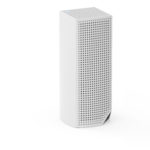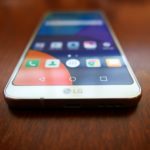
Since the first cameras turned up in phones, originally in Japan, technology companies have been seeking to make use of the new visual dimension. Selfies, it turns out, have become the number one “killer app”.
In a recent survey of 6,500 consumers in Britain, France, Germany and Spain, Sony Mobile found that consumers are open to new apps that go beyond the selfie, as they become more accepting of the camera for uses such as medicine, banking and fitness.
A camera can take images of a person exercising and let him know if he’s performing a certain routine right, for example. A bank can use a selfie to double check on the identity of someone logging in to an account.
These uses mean that the selfie will no longer just be a frivolous activity but one that enables serious apps, according to Dr Ian Pearson, a British futurologist who worked with Sony on the study. He tells Techgoondu that the selfie will become more important over time.
NOTE: The responses have been edited for brevity and house style.
Q: Selfies have been blamed for bringing out the narcissistic tendencies of people and encouraging envy. But you say it’s evolved into something good?
A: Not at all, those factors haven’t vanished, nor have they ceased to be problems. They are still real and important. Every technological development brings a mixture of benefits and problems, and it always takes society time to learn how to use them.
Using selfies to document personal triumphs and experiences can make a very useful contribution to personal happiness, helping people to remember successes, inspiring them to repeat or exceed them, or reassure them about their capabilities when they are feeling inadequate or depressed.
If they are used instead to make friends jealous, that obviously is a negative. I believe social media have the primary responsibility do more to encourage more positive and supportive uses of sharing any kind of media on their platforms, and to be fair, some social media organisations do recognise that they contribute to these problems and are trying to find solutions.
Taking selfies is not a problem per se; it is the way in which they are used afterwards that can be beneficial or harmful. We need to keep taking selfies, but social media needs to encourage their good uses and discourage bad ones.
Q: Many of the things predicted, such as seeing a doctor remotely, have been talked about for a while. What’s changed now to make users embrace them?
A: You’re right, telecoms companies were trialling the first video connections to doctors 20 years ago, and the results were positive, but they were using prototype-quality equipment and excellent operating conditions.
Back then, the video and communications technology to enable such services was very rare, low speed, poor quality or too expensive to roll out for widespread use. It is only very recently that smartphones with good front and rear-facing cameras that can work in the poor indoor lighting conditions have become available, and of course that is where such consultations would be most likely to take place.
Some surgeons already offer phone consultations, so using video will not require much adaptation. Good quality images and video in poor lighting will make a huge difference to the feasibility and usefulness of such a service.
User familiarity is also no longer an issue, as many users are already very adept at using video and selfies. So, cost, quality, infrastructure, equipment suitability and availability and importantly both-end familiarity with the equipment needed to use such services have all changed. In short, we’re ready to start now.
Q: Will the fear of losing one’s privacy cause users to recoil from sharing more information online, or are we past that with the Facebook and Instagram generation?
A: I used to think privacy concerns would prevent most people from sharing so much, but experience shows that it is definitely a generational concern. Under 25s, especially, have grown up immersed in a sharing world.
They rightly don’t feel worried that there some embarrassing pictures of them have been posted in social media, because that is true of almost everyone in their age group, so it doesn’t cause them any disadvantage.
We have all done embarrassing things, it’s just that that some generation’s are better documented. For older people, and by that I mean everyone over 25, most people will have taken more care about what they shared and how they behaved when smartphone cameras were around, so those that have embarrassing pictures will be at a disadvantage.
More interestingly, that generational difference will only disappear very slowly. Us older people will still have to be careful if we want to keep our clean record, but young people are essentially free. They seem to have successfully inverted a potential problem into an advantage.
You mention Facebook and Instagram, but they have quite different age profiles. As a later market entrant, and with far younger users, Instagram users should be less privacy-concerned than Facebook users.







Quite an insightful article on the why & what of selfies!!
COFIE